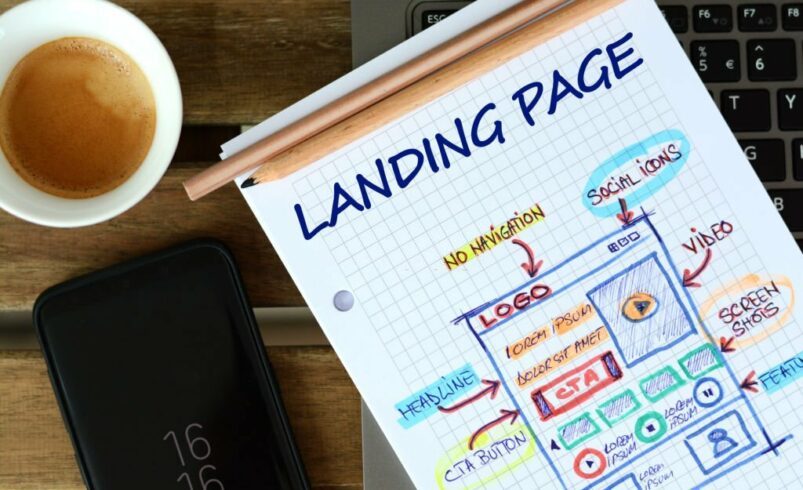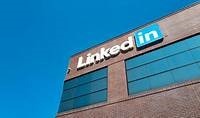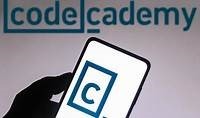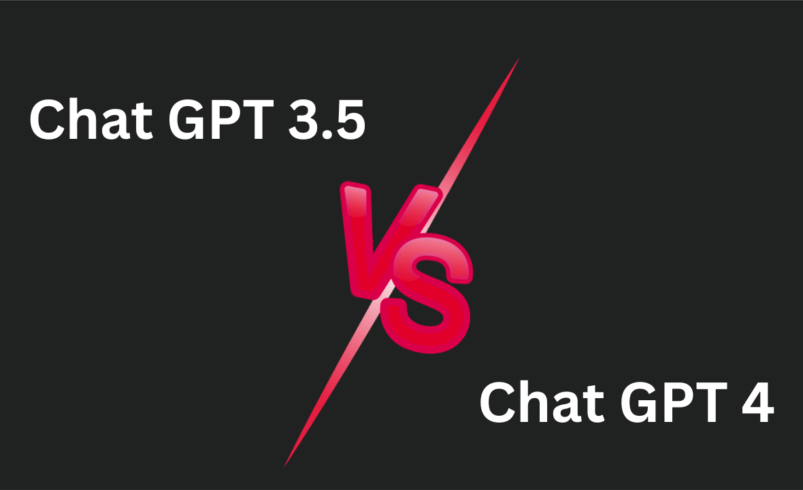
November 22, 2023
Landing Page Demystified: A Blueprint for Digital Success
In digital marketing, a landing page is a standalone web page, specifically created for a marketing or advertising campaign. It serves as the destination where a visitor “lands” after clicking on a link in an email or ads from platforms like Google, Bing, YouTube, Facebook, Instagram, Twitter, or similar places on the web. Unlike regular web pages that often have multiple goals and encourage exploration, landing pages are designed with a single focus or goal, known as a call to action (CTA).
Here’s why landing pages are powerful:
- Focused Purpose: Landing pages are laser-focused on achieving a specific outcome, such as getting users to make a purchase, sign up for a newsletter, or download an ebook.
- Higher Conversion Rates: By minimizing distractions and providing a clear CTA, landing pages increase the chances of converting visitors into leads or customers.
- Cost-Effective: They help lower the cost of acquiring leads or sales by optimizing the conversion process.
- Part of the Marketing Funnel: Landing pages play a crucial role in the marketing funnel, especially after prospects click on an ad or email link.
Homepage vs. Landing Page:
| Homepage | Landing Page |
| A homepage showcases the brand, offers various products, and provides additional company information. Visitors can explore freely but may not necessarily make a purchase. | A landing page, on the other hand, is hyper-focused on a single offer. It minimizes distractions, making it ideal for conversions. Marketers use dedicated landing pages to turn existing traffic into customers. |
Remember, Dynamic landing pages are where the magic happens—where visitors take action and become leads or buyers!
What are some best practices for creating a landing page?
When creating a landing page, consider the following best practices to maximize its effectiveness:
1. Clear and Concise Message:
- Simplicity is key. Clearly communicate the purpose of your landing page in a few words. Avoid jargon or complex language.
- Use a strong headline that grabs attention and aligns with the visitor’s expectations.
2. Single Call to Action (CTA):
- Focus on one primary action you want visitors to take (e.g., sign up, download, buy).
- Make your CTA prominent using contrasting colours and persuasive language.
3. Minimal Distractions:
- Remove unnecessary navigation links or external links that might divert attention.
- Limit the number of form fields—only ask for essential information.
4. Visual Hierarchy:
- Arrange elements logically. Use white space, headings, and bullet points to guide the eye.
- Place the most important content above the fold (visible without scrolling).
5. High-Quality Imagery:
- Use relevant images or videos that enhance your message.
- Ensure images are optimized for speed to prevent slow loading times.
6. Mobile Optimization:
- Most visitors come from mobile devices. Ensure your landing page is responsive and looks great on all screen sizes.
7. Trust Signals:
- Include trustworthy elements like customer reviews, ratings, security badges, or endorsements.
- Testimonials build credibility.
8. A/B Testing:
- Continuously test different versions of your landing page (A/B tests) to optimize conversion rates.
- Experiment with headlines, CTAs, colours, and layouts.
9. Loading Speed:
- Optimize images, scripts, and code to reduce load time.
- Slow pages lead to higher bounce rates.
10. Clear Form Labels:
- If your landing page includes a form, label fields clearly.
- Use placeholder text to guide users.
Remember, a well-crafted landing page can significantly impact your marketing campaigns. Keep it focused, user-friendly, and aligned with your goals!

How do I create an effective headline for my landing page?
Creating an effective headline for your landing page is crucial for capturing attention and encouraging visitors to take action. Let us discuss some best practices and proven headline formulas:
1. Message Match and Clarity
-
Prioritize message match:
Ensure your headline aligns with the rest of your campaign. Visitors should instantly recognize they’re in the right place.
-
Be clear rather than clever.
Use straightforward language that sets expectations for the rest of the page.
2. Headline Formulas:
-
How-to Headline:
- Straightforward and solution-oriented.
- Example: “How to Boost Your Website Traffic in 7 Days.”
-
Ultimate Guide Headline:
- Appeals to those seeking comprehensive information.
- Example: “The Ultimate Guide to Mastering Email Marketing.”
-
Fear Headline:
- Highlights a problem or risk.
- Example: “Warning! Common Mistakes That Ruin Your Credit Score.”
-
Rally Cry Headline:
- Motivational and urgent.
- Example: “Let’s Stop Plastic Pollution Now!”
-
Secrets Headline:
- Creates curiosity.
- Example: “Unlock the Secrets of Successful Entrepreneurs.”
-
Outrageous Headline:
- Bold and attention-grabbing.
- Example: “Why Eating Chocolate for Breakfast Is the Key to Weight Loss.”
-
Lessons Learned Headline:
- Shares personal insights.
- Example: “5 Lessons I Learned from Launching a Startup.”
-
Question Headline:
- Provocative and engages readers.
- Example: “Are You Making These Costly Investment Mistakes?”
3. Visual Tips
- Center your headlines.
- Use Title Case (capitalize each word).
- Avoid ending with a period (it can create mental stopping points).
- Break up lengthy headlines with ellipses or em-dashes for readability.
Remember, your headline is the gateway to your landing page. Craft it carefully to entice visitors and drive conversions!
Can you give me an example of a good landing page?
Let us explore some inspiring landing page examples from various industries. These examples showcase effective design, clear messaging, and persuasive elements:

1. Stripe Software Landing Page:
- Stripe, a financial services startup, excels in design and user experience. Their software landing page is clean and concise and highlights key features. The use of visuals, bold typography, and a prominent call-to-action (CTA) makes it effective.

2. LinkedIn Jobs Landing Page:
- LinkedIn’s job search landing page features a sticky but nondisruptive CTA. It encourages users to explore job opportunities without overwhelming them. The design is user-friendly and focused on conversions.

3. Codecademy Business Training Landing Page:
- Codecademy’s landing page for business training emphasizes what companies receive when joining their program. The layout is straightforward, and the content clearly communicates value to potential clients.

4. Airbnb Hosts Landing Page:
- Airbnb’s landing page targets hosts who want to list their properties online. The page provides essential information, encourages sign-ups, and maintains Airbnb’s brand consistency.

5. Shopify Ecommerce Landing Page:
- Shopify’s ecommerce landing pages are visually appealing, emphasizing product features, benefits, and trust signals. They use high-quality imagery and persuasive copy to drive conversions.

6. Starbucks Landing Page:
- Starbucks’ landing pages often focus on seasonal promotions. They use vibrant visuals, limited distractions, and a clear CTA to encourage customers to explore new offerings or sign up for rewards.
Remember, a great landing page combines compelling design, relevant content, and a strong CTA. Feel free to draw inspiration from these examples as you create your own!
What are some common mistakes to avoid when creating a landing page?
When creating a landing page, it is essential to avoid common pitfalls that can hinder its effectiveness. Let us explore some of these mistakes and how to steer clear of them:
Lack of Clarity:
Problem: If visitors can not quickly understand what your landing page offers, they will bounce.
Solution: Ensure your headline, subheadline, and visuals clearly convey the purpose and value proposition. Be concise and compelling.
Ignoring Mobile Users:
Problem: With mobile traffic on the rise, neglecting responsive design hurts conversions.
Solution: Optimize your landing page for mobile devices. Test it thoroughly on various screen sizes.
Too Many Conversion Goals:
Problem: Offering multiple CTAs confuses visitors. They may not know which action to take.
Solution: Focus on one primary conversion goal per landing page. Keep it simple and aligned with your campaign.
Shorter Forms Assumption:
Problem: Assuming shorter forms always convert better can lead to missed opportunities.
Solution: Balance form length with the value you are offering. Longer forms for high-value content, shorter ones for quick actions.
Mismatched Ad Copy and Landing Page:
Problem: If your ad promises one thing and the landing page delivers another, trust is lost.
Solution: Ensure consistency between ad copy and landing page content. Deliver on the promise.
Including Navigation Menus and Footers:
Problem: Navigation menus distract visitors from your primary CTA.
Solution: Remove unnecessary links. Keep the focus on conversion.
Neglecting Social Proof:
Problem: Lack of reviews, ratings, or case studies undermines credibility.
Solution: Display social proof—testimonials, success stories, or trust badges—to build trust.
Remember, a well-crafted landing page should guide visitors seamlessly toward your desired action. Avoid these mistakes, test your page, and iterate for optimal results!

Conclusion
Landing pages are digital powerhouses, focused on specific goals, driving higher conversions, and cost-effectiveness. Their distinction from homepages lies in a razor-sharp focus, turning visitors into valuable leads. Creating effective landing pages demands clarity, minimal distractions, and mobile optimization. Headlines serve as gateways, requiring careful crafting.
Learn from successful examples like Stripe, LinkedIn, Codecademy, Airbnb, Shopify, and Starbucks. Avoid pitfalls like unclear messaging, lack of mobile responsiveness, and multiple conversion goals. Understanding landing pages involves skillfully balancing design, content, and user focus for digital success.
FAQs
What is the primary purpose of a landing page in digital marketing?
Learn why landing pages are crucial for marketing and advertising campaigns, their specific goals, and how they differ from regular web pages.
What are the key best practices for creating an effective landing page?
Explore essential tips, including message clarity, single call-to-action focus, minimal distractions, visual hierarchy, mobile optimization, and the importance of trust signals.
How can I create an attention-grabbing headline for my landing page?
Discover proven headline formulas, such as how-to, ultimate guide, fear, rally cry, secrets, outrageous, lessons learned, and question headlines, along with visual tips for maximum impact.
Can you provide examples of successful landing pages from different industries?
Explore inspiring landing page examples from companies like Stripe, LinkedIn, Codecademy, Airbnb, Shopify, and Starbucks, highlighting effective design, clear messaging, and persuasive elements.
What common mistakes should I avoid when creating a landing page?
Understand pitfalls to steer clear of, including lack of clarity, neglecting mobile users, having too many conversion goals, mismatched ad copy, including navigation menus, neglecting social proof, and more. Learn how to optimize your landing page for optimal results.
















